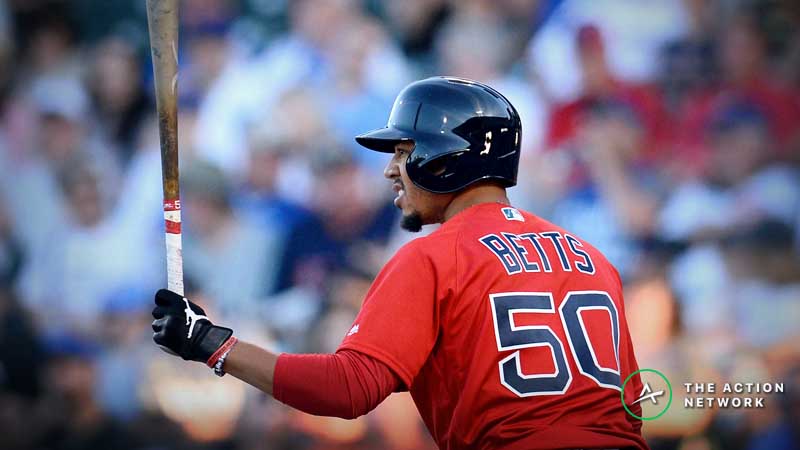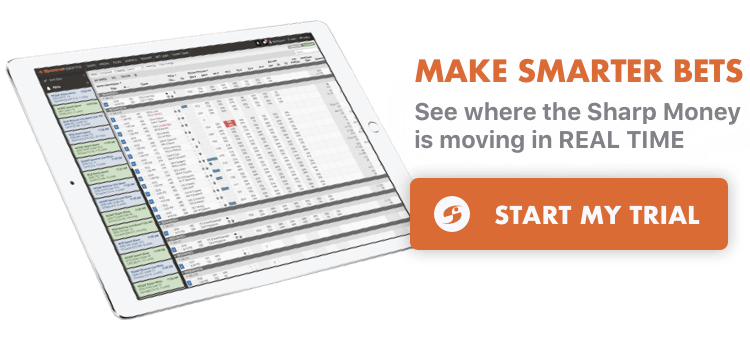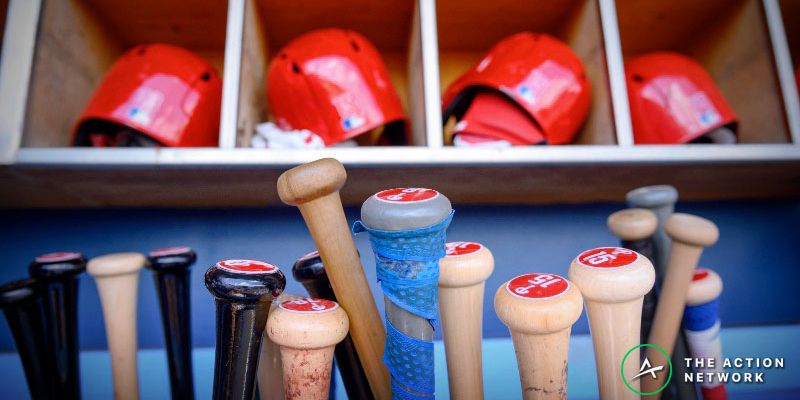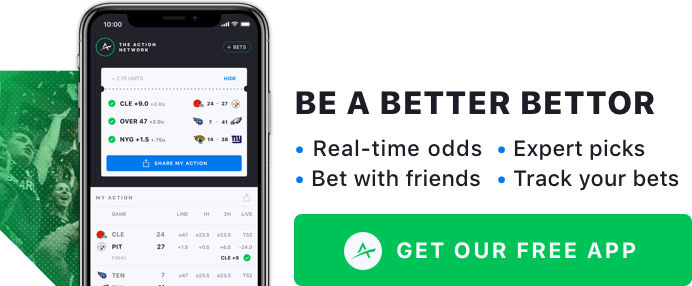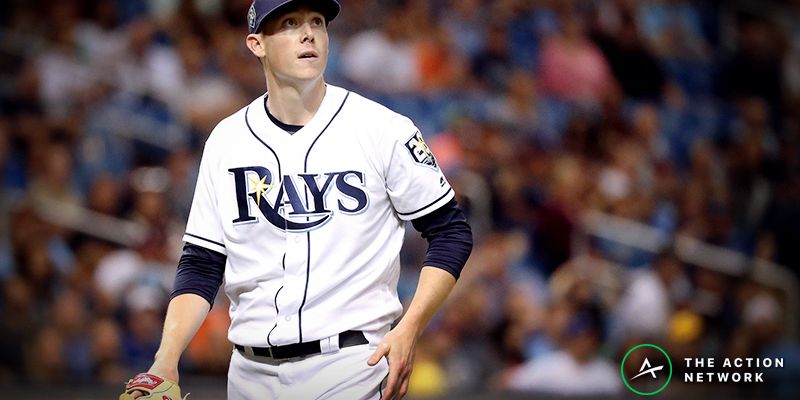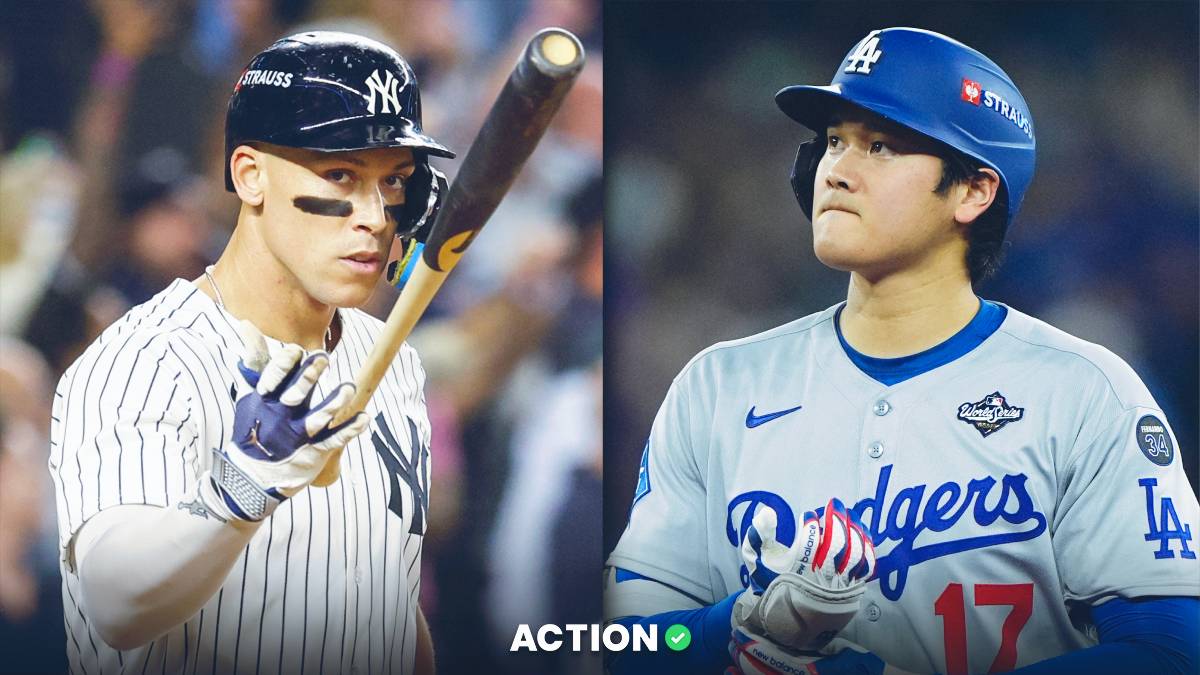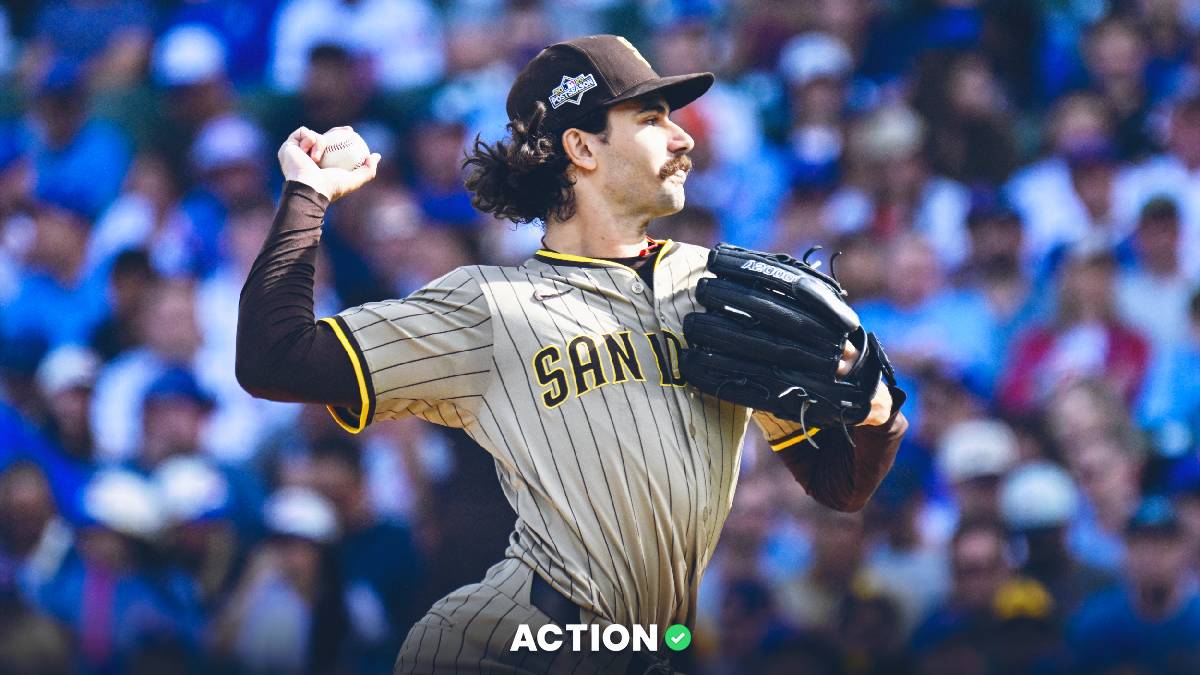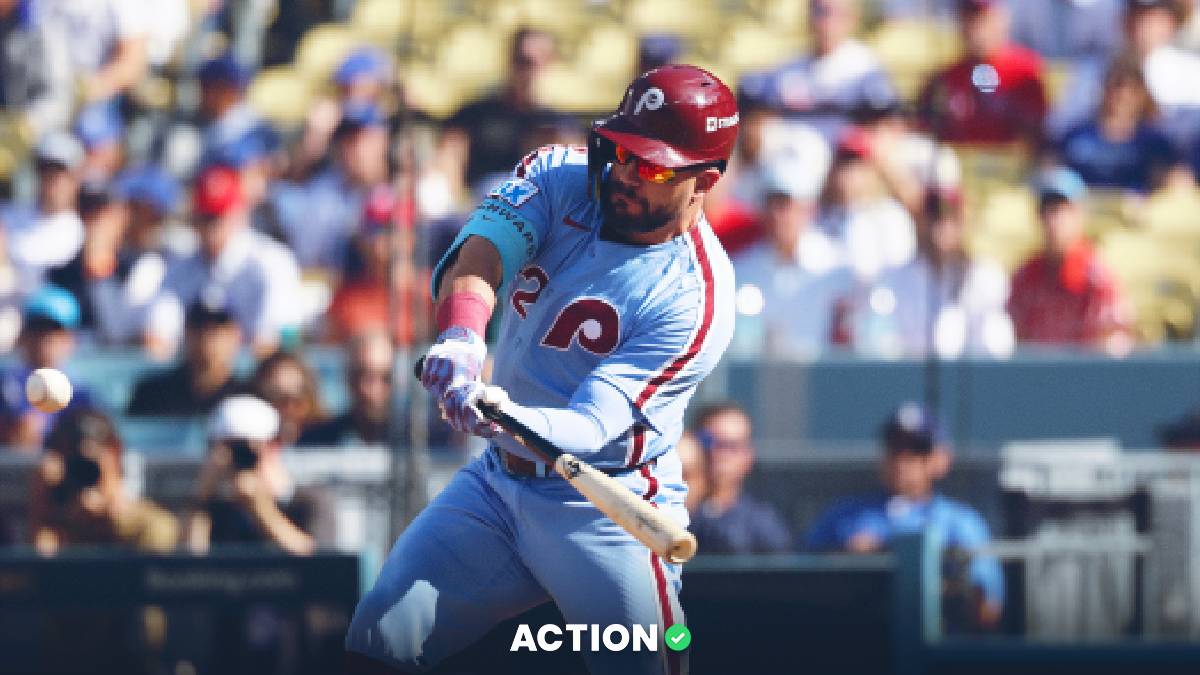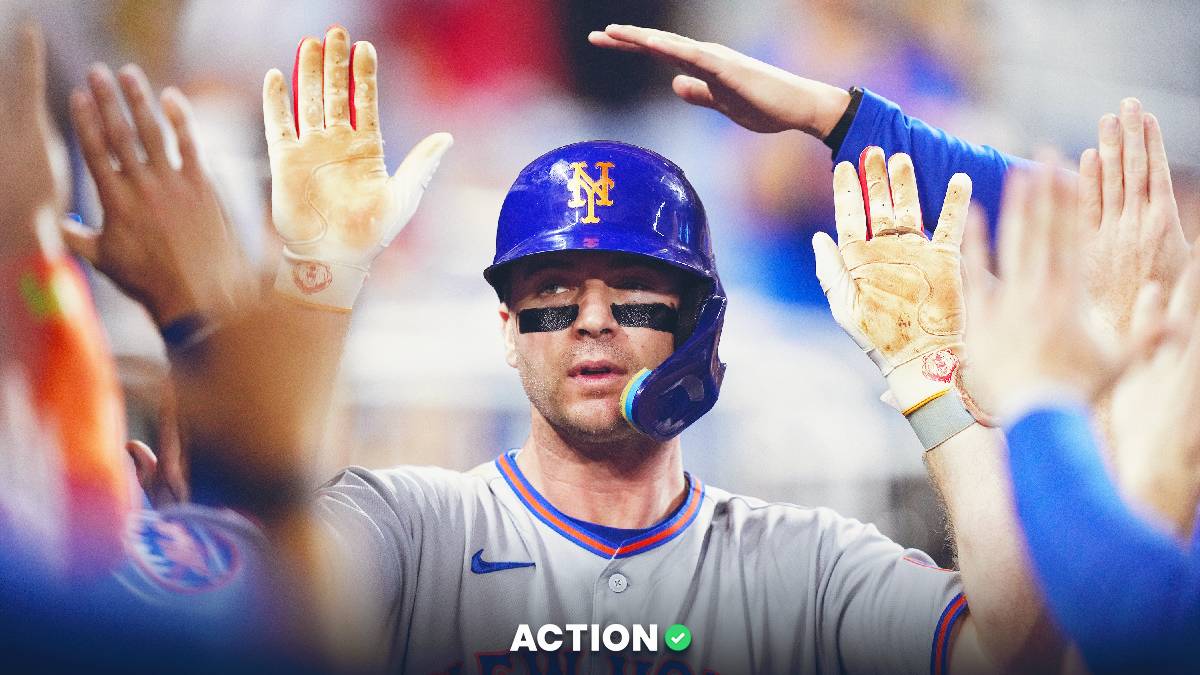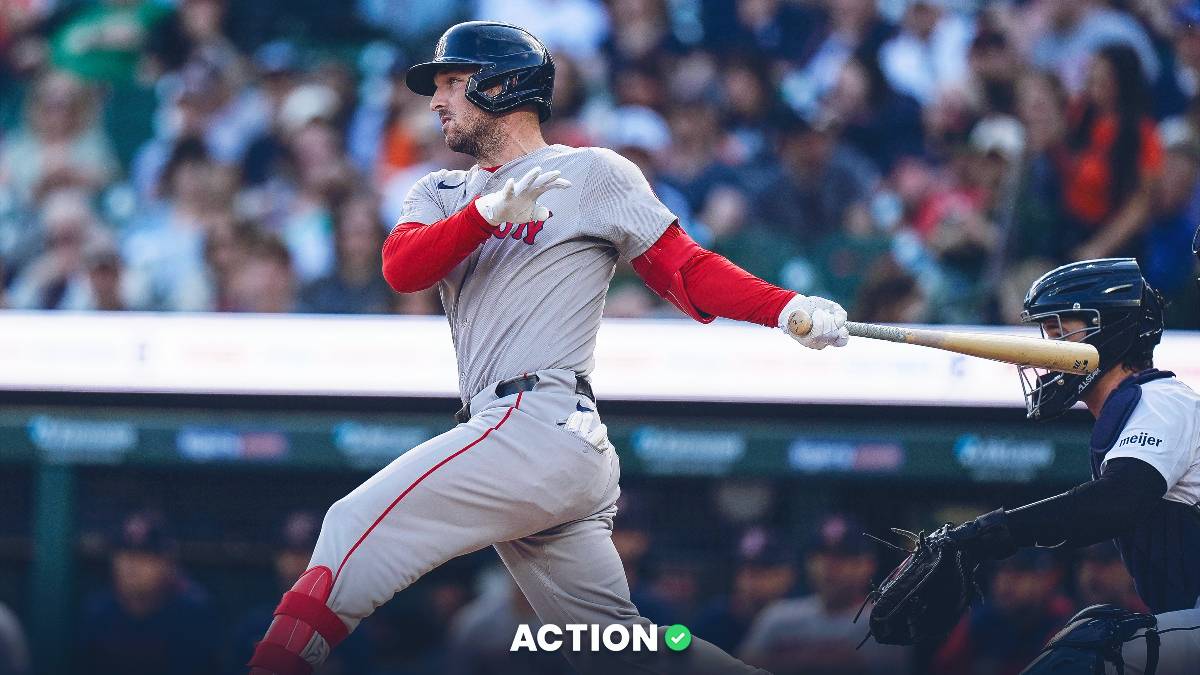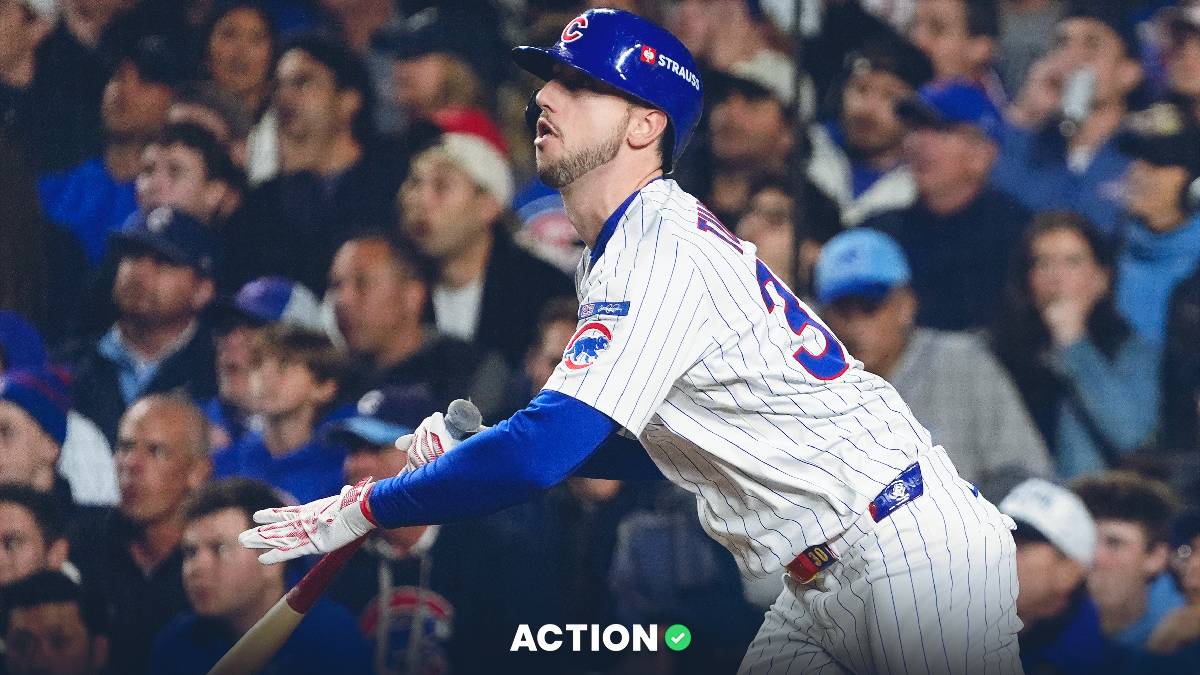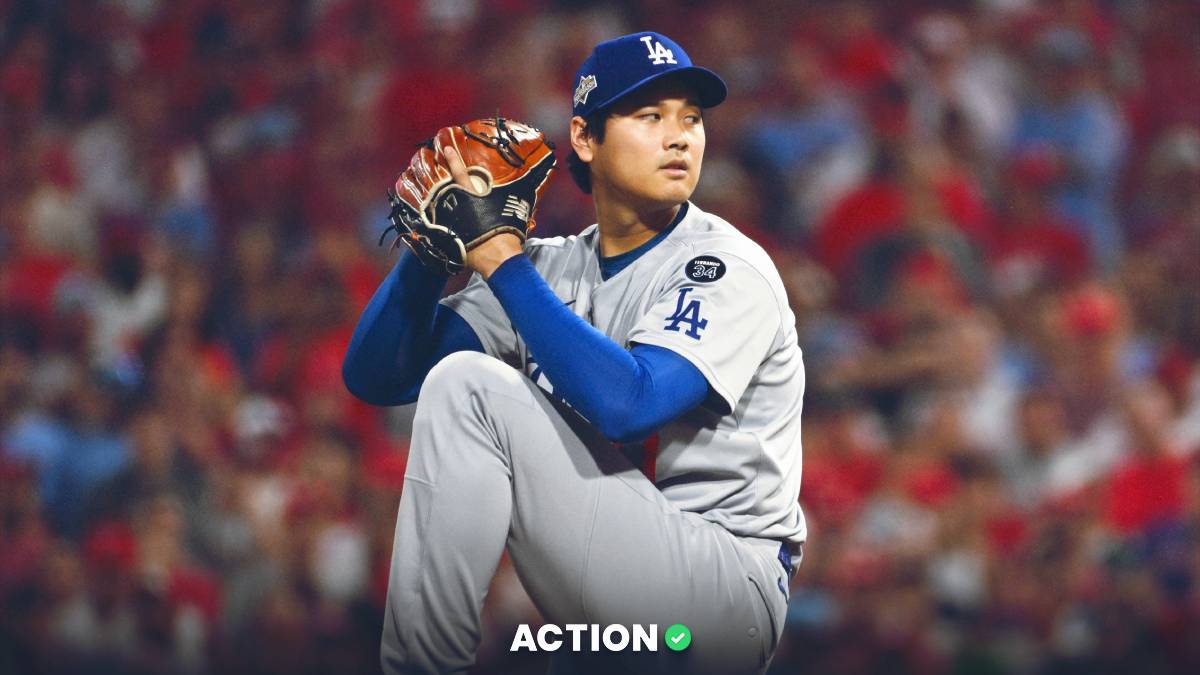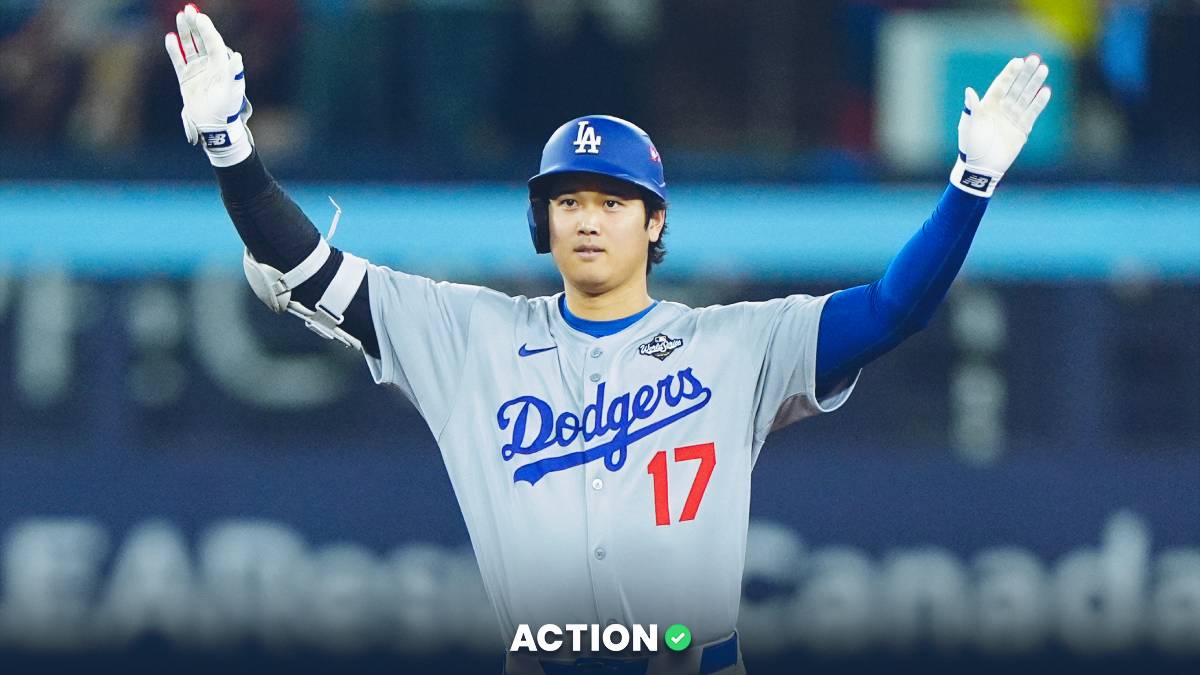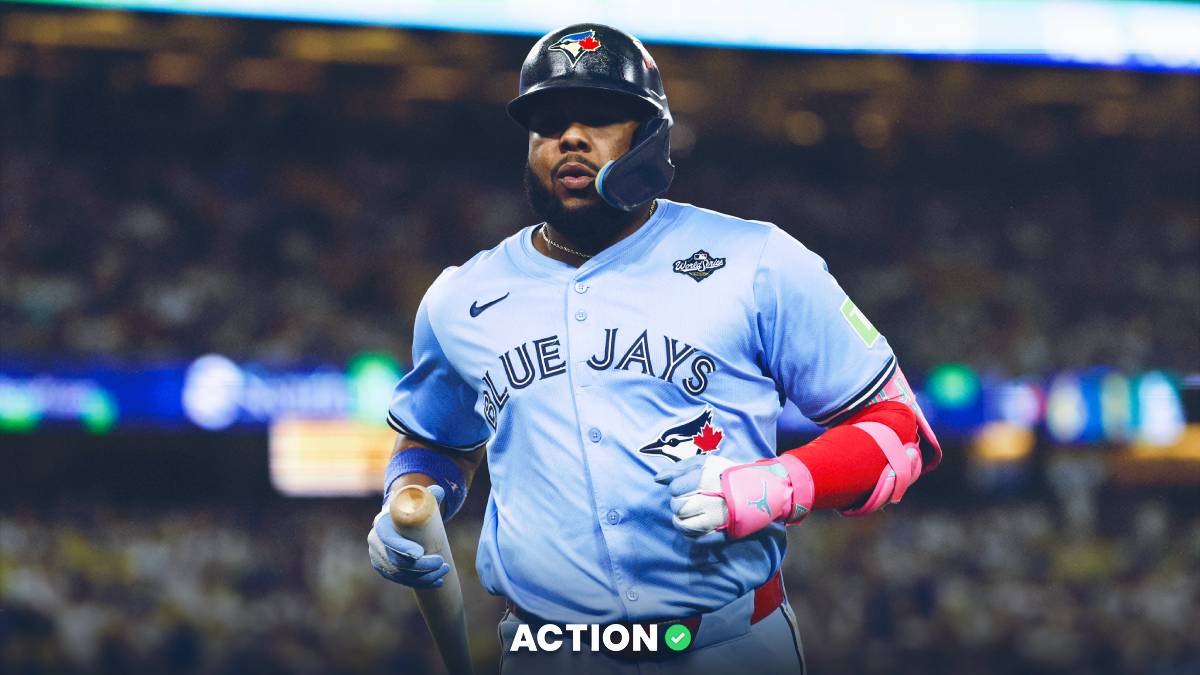- Wondering how to bet on baseball? It's one of the best sports to wager on because bettors only have to pick who wins, not who covers.
- The MLB season is extremely long with a dozen or more games per day, providing seemingly endless betting opportunities.
- By focusing on divisional underdogs, the weather, betting against the public and locating sharp action, baseball bettors can maximize their edge in 2019.
“The one constant through all the years has been baseball. America has rolled by like an army of steamrollers. It has been erased like a blackboard, rebuilt and erased again. But baseball has marked the time. This field, this game: it’s a part of our past. It reminds us of all that once was good and that could be again." — Terence Mann (James Earl Jones), Field of Dreams
If football is the undisputed king of betting, baseball is the sweet, under-the-radar, value prince. Unlike football, which is predominantly a spread sport, baseball bettors only need to pick who wins the game, not who covers. This is called betting the moneyline.
The baseball season is also extremely long and drawn out. With more than a dozen games almost every single day (2,430 regular season games total), bettors have countless opportunities to pinpoint value and maximize their edge.
So how can you turn a profit betting baseball? Let's break down the fundamentals and discuss a few easy, bankroll-building tips.
How to Bet on Baseball
1. Action vs. Listed Pitcher
No single player has a bigger influence on a baseball game than the starting pitcher. As a result, MLB bettors are afforded two options when placing a bet: "Action" and "Listed Pitcher."
Knowing the difference is critically important because it's very common to see starting pitchers get scratched due to injury, pushed back for rest or even traded.
Action means that if either pitcher gets scratched, you are locked into your bet at a revised price based on what the new line opens at. Listed Pitcher means your bet is voided if either scheduled starting pitcher doesn't start.
To be safe, it's a good idea to bet listed pitcher. You'd hate to spend all day breaking down a game based on a pitching matchup and then have it all go out the window if a starting pitcher gets scratched.
2. Bet to Risk (Not to Win)
This fundamental difference can be applied across all sports, but it is especially important when betting baseball.
Bet to risk means you are betting a specific pre-determined amount based on your unit size. Bet to win means you are betting either a higher or lower amount based on the price of the bet.
For example, say you want to bet the Cubs as a -125 favorite. Betting to risk means that if you bet $100 on the Cubs and they win, you win your $100 back plus you win $80 based on the -125 price. If you bet the Cubs to win (not risk), you would have to lay $125 on the Cubs in order to win $100. If the Cubs win, you get your $125 back plus you get $100.
However, if the Cubs lose, you only lost $100 by betting to risk, versus losing $125 on betting to win.
On the flip side, say you wanted to bet on the White Sox as a +130 underdog. If you bet to risk $100 on the White Sox, you would get your $100 back plus win $130 if the White Sox win. If you bet to win $100 on the White Sox, you would only have to lay roughly $77 based on the +130 price. If they win, you get your $100 back plus you win $77.
It might sound confusing, but do yourself a favor and always bet to risk (not win). It will save you when you lose on a favorite and pad your bankroll bigly when you win on an underdog.
3. Avoid Big Favorites
The betting public always wants to bet on the "better" team. Sportsbooks know this inherent bias and will shade lines toward the favorite, forcing recreational bettors to take overpriced, inflated lines.
This is especially true for popular, big market teams like the Red Sox, Yankees, Cubs and Dodgers. Instead of listing Boston as a -150 favorite, books will instead post -170, knowing that public bettors will take the Red Sox regardless.
Using our Bet Labs software, we found that favorites -150 or more have gone 7,531-4,354 (63.4%) since 2005. However, despite this impressive record, you actually would have lost -218.26 units based on the expensive favorite price ($100 bettor would have lost $21,836).
There are times when betting a big favorite can be a smart play. But if you consistently bet big favorites, they are sure to burn your bankroll. The juice just isn't worth the squeeze.
4. Focus on Divisional Underdogs
Blindly betting underdogs is a losing endeavor. Since 2005, underdogs have gone 14,490-19,499 (42.6%), losing -512.93 units. However, we notice a huge difference between underdogs playing a divisional opponent and underdogs playing a non-divisional opponent.
Baseball is unique because teams in the same division play each other 19 times per year. As a result, divisional teams know each other very well. This built-in familiarity levels the playing field and benefits the underdog.
Since 2005, divisional underdogs have gone 6,693-8,755 (43.3%). On the surface, this seems like a losing record. However, because of the plus-money payouts (think +120, +150, +170), divisional underdogs produced +51.34 units won ($100 bettor made $5,134).
Underdogs playing a non-divisional opponent lost -564.28 units.
5. Bet Against the Public
Baseball is one of the best sports for betting against the public. By focusing on the most heavily bet and most lopsided games of the day, contrarian bettors can take advantage of public bias, pounce on artificially inflated numbers and place themselves on the side of the house. Remember, the house always wins.
Our Sports Insights MLB Contrarian plays, which focus on underdogs getting less than 35% of moneyline bets in the most popular games of the day, have gone 4,098-4,306 (48.8%), winning +205.7 units since 2005.
The best spot for betting against the public is teams getting less than 20% of moneyline bets. Since 2005, they've gone 1,259-1,864 (40.3%), but produced +76.15 units won based on the plus money payouts. Simply put, it pays to go contrarian in the most lopsided games of the day.
6. Follow Reverse Line Movement
Just like betting any other sport, it's not enough to just go contrarian. You also want to be on the sharp side of every game (with the professional bettors who have a long track record of success and win at a high rate).
One of the easiest ways to locate sharp action is looking for reverse line movement (RLM): when the betting line moves in the opposite direction of the betting percentages (think Pirates getting only 25% of bets, but moving from +140 to +130).
Since 2005, all teams (underdogs and favorites) receiving less than 30% of moneyline bets with at least 1-cent RLM have produced +87.96 units won.
If you take it a step further and only look at divisional underdogs receiving less than 30% of moneyline bets with at least 1-cent RLM it improves to +125.56 units won since 2005.
The Holy Grail RLM system is divisional underdogs getting less than 30% of bets in heavily bet games. This spot has won an astounding +169.17 units since 2005.
7. Buy Low On Bad Teams After a Win
When a bad team wins a game, conventional wisdom says you should bet against them (or fade them) the next game. Why? Because they're bad for a reason and bound to regress to their losing form.
However, teams in this spot are incredibly profitable because they're so undervalued. Since 2005, teams with a win percentage of .400 or less coming off a win have won their next game 47.5% of the time, winning +159.03 units.
A $100 bettor would be up nearly $16,000 backing these teams over the past 14 years.
8. Back American League Teams In Interleague Play
Interleague Play first began in 1997 and was expanded in 2013. Now teams play 20 interleague games per season. These unique matchups provide an increased edge for savvy bettors.
Because of the rules, style of play and roster construction (the American League plays with a designated hitter, while the National League lets the pitcher hit), American League teams have had a distinct advantage in Interleague Play.
Since 2005, American League teams have won 54.3% of the time, winning +129.11 units.
"Average" AL teams perform even better: 64.4%, +67.17 units won since 2005.
9. Pay Attention to Wind
The vast majority of baseball bets are made on the moneyline, but that's not the only way to bet a game. The second most popular baseball bet is the over/under, also known as the total. This is the total amount of runs scored by both teams combined.
One of the most important factors to consider when betting MLB totals is the wind. It can have a massive impact on the outcome of the game.
If the wind is blowing in, it greatly benefits unders. Why? Because first row home runs turn into warning track outs. Since 2005, when the wind is blowing in at 5 MPH or more, the under has won 55.1% of the time, producing +98.46 units won.
The best park for betting windy unders is Wrigley Field. According to our Bet Labs database, windy unders at Wrigley in day games with totals of 8 or higher have won 62.9% of the time since 2005.
As you'd expect, wind blowing out is great for overs. If the wind is blowing out at 8 MPH or more, the over has won 52.8% of the time since 2005, winning +68.67 units since 2005.
10. Lean On Unders
When betting totals, recreational bettors always gravitate toward overs. It's simply more fun to root for a high-scoring game with lots of runs scored. No one wants to see a boring snooze fest filled with strikeouts, double-plays and 1-2-3 innings. Except, of course, the sharps.
In a vacuum, unders have more value than overs because oddsmakers know the public will bet overs regardless, so they can shade lines toward the over, providing additional value for savvy wiseguys. Even better, unders have steadily risen over the past four years thanks to sabermetrics (the shift is so advanced it takes away hits), plus pitchers are striking everyone out and offense is down across the board.
Over the past four years, the Under cash rate has steadily increased from 48.8% to 51.7%.
One of the best wiseguy edges is taking Contrarian Unders for Winning Teams. When two good teams (win percentage 51% or more) go head-to-head, they tend to play tighter, lower scoring games. If 35% or less are taking the under in these situations, the under has won 55.1% of the time, winning +190.18 units since 2005.
Another big moneymaker is contrarian unders with a total of 8 runs or higher receiving 40% or less bets. That spot cashed 55% last season, winning +74.68 units.
Games played in a dome or closed roof stadium have gone under 52.7% of the time since 2005, winning +68.56 units. Why? Perfect conditions for the pitcher and the ball doesn't travel well.
11. Know the Umpires
One variable that often gets overlooked by public bettors is the home plate umpire. While you should never bet a game solely because of an umpire, it should always be taken into account because, after all, umpires are human and can have pronounced tendencies.
Some umps have tight strike zones, which lead to more walks, runs scored and benefit overs. Others want to be "liked" by the home crowd, which benefits the home team, while others go over the top to appear "neutral" by favoring the away team.
For example, when Manny Gonzalez is behind the plate, the over has won +29.82 units since 2005. When Ron Kulpa calls balls and strikes, the under has won +39.38 units.
Meanwhile, home teams have won +51.74 units with Lance Barksdale and dogs have cashed +49.78 units with Jim Joyce.
12. Sunday Night Baseball
Maybe you're too busy to bet baseball every single day. That's ok. You can still take advantage of Sunday Night Baseball.
Because it's the only game of the night and nationally televised, it's very heavily bet. This makes it a fantastic spot to go contrarian and bet against the public — especially if it also has sharp action.
Since 2005, teams on Sunday Night Baseball getting less than 40% of bets with at least 1-cent of reverse line movement have cashed 60% of the time, winning +30.32 units.
13. Shop For The Best Line
Many casual bettors only bet through one sportsbook. This is a mistake because it forces you to play whatever number your book is offering.
Instead, take some time to set up accounts at multiple sportsbooks so you can shop for the best line.
For example, maybe you want to bet the Arizona Diamondbacks. Your book is offering +130, but a second book is posting +135. By having access to multiple books you just padded your potential payout by five cents.
It might not seem like a big deal, but over the course of a long season it can make a world of difference.
14. Manage Your Bankroll Properly
Bankroll management is key across all sports, but especially baseball. Because the season is so long, it can be very volatile with a wave of ups and downs along the way.
As a result, you want to stick to flat betting. This means betting the same amount on every single game, regardless of your confidence level: always risk 1 unit and only risk 3% of your bankroll per play. If you have a starting bankroll of $1000, this means you are risking $30 per game.
Also avoid betting parlays. Sure, we all want a big payout, but the books make a killing off parlays (the Nevada hold on each major US sport is roughly 5%, but parlays provide the house a 30% hold). You're much better off sticking to individual game bets.
15. Track Your Bets With the Action App
In the old days, in order to track your bets you had to keep a notebook or a spreadsheet. Luckily, times have changed. Now you can easily track all of your plays with a simple tap of the finger using The Action Network App.
Why is tracking your plays so important? Sure, we all want to monitor our performance. But the real key is learning more about yourself as a bettor: What are your weak spots? What's making you money? Maybe you find out you are crushing MLB totals, but losing large on home teams or favorites.
The Action App also allows you to track expert picks, connect with friends, along with providing insider analysis, premium content, live odds, betting percentages, live scoring, win probability meter and more.
Good luck this season.
Play ball!


